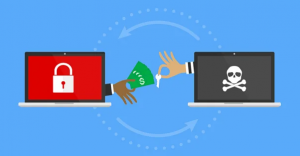 Accompanying the digital revolution is our reliance on digital systems, as well as the risk that comes with it. Technology will continue to grow exponentially, and threats evolve with an ever changing digital landscape. Hackers are able to move fast, and as soon as a hole in a system is patched up they’re already finding another way in. Businesses and institutions realize the growing risk of cyberattacks and certain sectors, like finance, invest a lot of money into cybersecurity and are subsequently not considered the largest targets (in terms of the number of attacks, when they are attacked, they face huge financial consequences.)
Accompanying the digital revolution is our reliance on digital systems, as well as the risk that comes with it. Technology will continue to grow exponentially, and threats evolve with an ever changing digital landscape. Hackers are able to move fast, and as soon as a hole in a system is patched up they’re already finding another way in. Businesses and institutions realize the growing risk of cyberattacks and certain sectors, like finance, invest a lot of money into cybersecurity and are subsequently not considered the largest targets (in terms of the number of attacks, when they are attacked, they face huge financial consequences.)
While in class we discussed healthcare being a major target of ransomware attacks because of its overall reliance on legacy systems, another target that made up a larger % of attacks in 2022 was the educational sector. Most institutions, however, don’t pay the ransom, and in fact only 3 out of the 45 reported cyberattacks paid the hackers off. Despite this, the educational sector has seen the amount of attacks double from 2021 to 2022. This is because schools are easy targets with a lot of personal information on their students, parents, faculty, etc… Lack of funding means many schools nationwide don’t spend a significant amount on cybersecurity, and the systems in place are vulnerable and often outdated. Additionally, public schools within a designated locale operate on the same networks, servers, systems, etc, meaning that if a hacker can get into one school’s database, it’s easy to gain access to multiple schools.
Schools have become the leading targets of ransomware attacks – CBS News
Hey, Catrina. I like how you emphasized on the growing risk of cybersecurity and more specifically ransomware as we integrate technology more into our lifestyles. The benefit of this is I guess the growing number of jobs in the Computer/IT Sector.